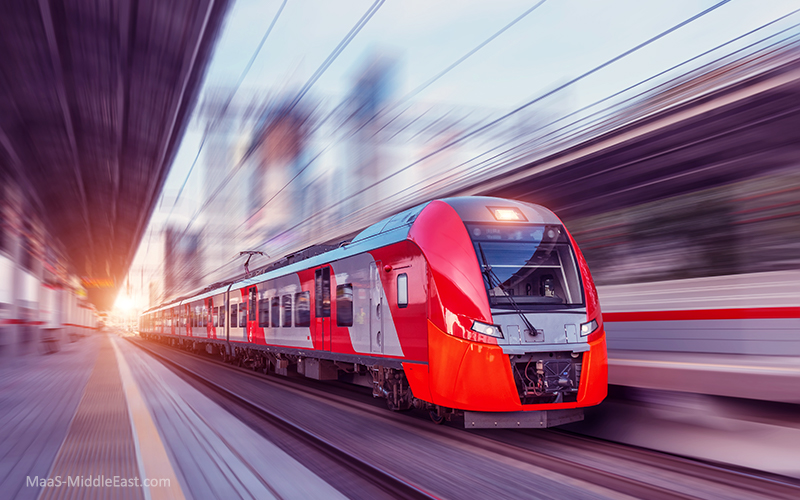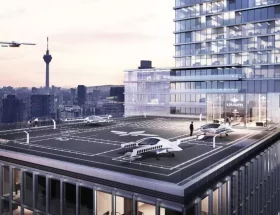Overview
The population of the world is more than 9.5 billion at present. It is estimated that 90% of the population growth in the future will be in cities. Railways are the most efficient mode of transport for people across the globe. For nearly 200 years since its inception, rail has been the backbone of industry and public transport.
Air transport is faster but costlier than rail. It is the most fuel-efficient mode of transportation for people and goods. The Middle East has largely remained underserved by a network of the rail so far. Realising the importance of rail in trade and connectivity, GCC countries are trying to push ahead with their dream project, GCC Railway.
The future of rail transport
Cars and aeroplanes have their limitations in terms of cost and limited capacities. In such a scenario, railways are well placed to serve the mobility needs of an increasing population across the cities of the world. On the other hand, fossil fuel is gradually being replaced by more sustainable power sources that hold promise for faster, greener, and cleaner networks of rail around the world. While every nation’s focus is to provide cheap and fast transportation to industry and the people, they want to avoid the adverse effects of climate change.
The last two years proved to be the toughest for railways around the world. Lockdowns and drastically reduced numbers of commuters meant rail operators had to bear massive losses in these two years. Today, with commuters back in large numbers, railways appear to be the most suitable answer to the increasing mobility needs of people and the industry around the globe.
Most advanced rail networks in the world
To keep pace with the growing needs of the industry and the increasing population in the cities, a strong rail network with advanced technology is the need of the hour. High-speed trains like the bullet trains of Japan and the Maglev trains of Europe and China have shown how quickly and conveniently people and goods can be transported across long distances. Countries like Japan, China, India, Spain, France, and Germany are working at a frantic pace to start these high-speed trains in new places. It is estimated that the high-speed rail network will cross 50,000 km (31,068 miles) in China by 2025.
England is working on the Japanese bullet train technology. It is believed it will have the fastest trains operating at an average speed of 362 km/h (225 mph) on the HS2 route by 2030.
With decades of experience in operating high-speed trains, countries like Japan, China, and France have understood that their benefits far outweigh the cost of maintenance and operation. Both China and Japan are regarded as heavyweights in high-speed train technology. They are working on trains operating at an average speed of 600 km/h (373 mph).
Another big project that Japan is tirelessly working on is Chuo Shinkansen. This 72 billion US dollars project aims to connect Tokyo with Nagoya with Maglev trains running at a speed of more than 640 km/h (400 mph). Passengers will be able to commute between these cities situated 286 km (178 miles) apart in just 40 minutes. This project will be extended to include Osaka in the future. The distance of 311 miles between Tokyo and Osaka will be covered in just 67 minutes.
China is busy with a project called Thee-Hour-Transportation-Circles. It is being built in the Pearl Delta Regio with cities like Shenzhen, Guangzhou, and Hong Kong and is intended to serve more than 120 million commuters. Once this project is complete, the people living in these cities will be able to commute at unbelievably fast speeds using Maglev trains. The project is expected to serve a massive 26,000 sq km area, twenty-six times larger than Greater London.
Gulf Rail project
As mentioned earlier, the Middle East region has been underserved in terms of a large rail network. Today, many countries and even continents are connected by rail networks. But this has not been the case with the Gulf countries. Six countries making up the GCC met two decades ago to rectify the situation. A plan was drawn to lay railway lines to connect the neighbouring countries of the GCC.
This rail line is expected to start from Kuwait city and run along the Arabian coastline to connect Bahrain, Oman, Qatar, the UAE, and eventually Saudi Arabia. The major cities connected by Gulf Rail would be Kuwait City, Dammam and Jubail (Saudi Arabia), Manama (Bahrain), and Doha (Qatar). Gulf Rail will go to the UAE from Saudi Arabia where it will cover cities like Dubai, Abu Dhabi, and Fujairah. In this ambitious plan, individual countries are envisaged to construct internal rail networks.
Saudi Arabia and the UAE had already started with the construction of internal rail networks. Both countries are now ready to introduce passenger rail lines. After seeing the work done by these two countries, Qatar gave a push to the construction of tracks and built a network of rail lines in the country.
A statutory body called GCC Railway Authority has been instituted to coordinate and oversee the project. Last year, Qatar media reported that work on the proposed section between Qatar and Saudi Arabia would commence soon.
The GCC regional media has expressed hope that the Gulf Rail would become operational in two to three years from now.
How will Gulf Rail impact the region?
Gulf Rail will improve connectivity between the six GCC countries significantly. Transportation of goods and people between these countries will become faster and more economical. The GCC would become more attractive to the rest of the world as a trading hub as transportation times and costs go down.
Member countries of GCC believe that Gulf Rail will be instrumental in the emergence of a much stronger trade block in the Middle East. Once the rail route is established, GCC is expected to become a large trading market similar to the European Union. GCC countries are also aiming at a unified customs authority to help in a brisk trade flow in the region.
Apart from commute and trade, the Gulf Rail is also expected to boost the tourism and entertainment industry in the GCC. Travel times will become shorter to attract more and more tourists from across the globe. All six countries realise the fact that they need to make sincere efforts to diversify their economies. The world is looking for alternatives to oil, and GCC countries need to widen their economies. Gulf Rail allows them to make the necessary transition away from oil-based economies.
Saudi Arabia has this Vision 2030, where the country aims to attract more than 100 million visitors annually. In 2019, the total number of visitors to Saudi Arabia was only 20.3 million. Authorities believe the construction of Gulf Rail and the expansion of the internal rail network will help in fulfilling this dream.
The completion of Gulf Rail is believed to pave the way for the construction of domestic rail networks in several other countries in the region. Enthused by the recent developments in Gulf Rail, The government of Oman has declared its plans to construct a massive 2100 km long internal rail network starting at the border of UAE. Oman also intends to construct Muscat Metro connecting Muttrah and Ruwi districts with Muscat International Airport.










